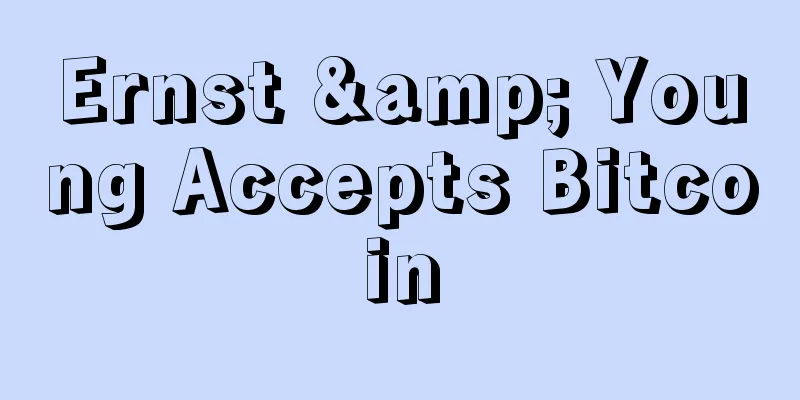Ethereum merger is not expected in June, it may come this fall

|
After weeks of speculation, Ethereum core developer Tim Beiko confirmed in a tweet on Tuesday that the long-awaited Ethereum merger will come later than expected. Beiko said the network’s transition to proof-of-stake is more likely to happen in “a few months” rather than in June. The merger marks Ethereum’s move to a proof-of-stake (PoS) mechanism. Today, the network relies on a proof-of-work (PoW) system, where a decentralized network of computers competes to validate transactions. Ethereum’s shift to a PoS mechanism, where users retain the ability to secure the network by “staking” ETH, is expected to reduce Ethereum’s energy costs by 99% and make the network easier to scale. According to Bitpush, Ethereum's first mainnet shadow fork was launched on Monday. Tim Beiko said that the result of the shadow fork is the key to determining the final merger time. However, according to a tweet posted over the weekend by Ethereum DevOps engineer Parathi Jayanathi, three recent shadow forks of the Ethereum Goerli testnet have revealed bugs that still need to be resolved before the update is ready. Building a new consensus mechanism for Ethereum would introduce significant complexity. In addition to introducing a number of engineering challenges, Ethereum’s PoS model would also add a new set of mechanisms to ensure that network validators act in good faith. With billions of dollars at stake, a single misstep would have catastrophic consequences for the entire ecosystem. Even after the merger, Ethereum’s high gas fees and relatively slow speeds — which make the network unusable for many applications — are likely to remain. Ethereum is the epicenter of decentralized finance (DeFi), GameFi, and NFTs, but a slew of newer PoS chains are catching up by offering users faster and cheaper transactions. The merger replaces ethereum’s original “Ethereum 2.0” plan, which included adding sharding, which would increase network throughput by dividing activity into parts that can be processed simultaneously. Sharding is still on the ethereum roadmap, but it has been delayed until 2023 in order to speed up the transition to PoS. With this in mind, much of the attention of the Ethereum developer community has shifted to Layer 2 rollups like Arbitrum, Optimism, and Loopring, which have amassed billions of dollars in total value locked in third-party solutions for scaling the Ethereum network. Even after the merger, more and more network activity is expected to shift to these layer 2 networks, which process transactions on separate blockchains before bundling them up and passing them back to the ethereum base layer. Layer 2 solutions each have unique advantages and disadvantages compared to Ethereum, but they tend to be faster and cheaper than the base layer while still including basic security guarantees. |
<<: What you need to know about PoS
>>: Ripple claims ‘big win’ in SEC case
Recommend
Bitcoin software ushers in version 0.13.2 update, and 0.14.0 is expected to be released in March
On the day of Bitcoin’s 8th anniversary, the Bitc...
Judging from your face whether you are a Buddhist, Confucian or Taoist
Recently, the “Buddhist” style has been all over ...
TechCrunch Disrupt discusses Bitcoin and blockchain
While the block size debate is currently the most...
What does it mean when a woman has her eyebrows cut off? She has extreme thoughts and a strong desire for revenge!
What is the fate of a woman with broken eyebrows?...
Bitmain officially revealed the important parameters of the new 7nm Antminer product.
Following the release of the first pre-heating po...
What will happen if there is a mole with hair on the right side of the back of my neck?
Some people say that the position of moles is rel...
Three facial features of women who bring good luck to their husbands
Three major facial features that make a woman a l...
Don’t marry a woman who looks like a widow. You will be unlucky if you get involved with her!
1. Big nose without flesh In physiognomy, if a wo...
Why is the computing power of the mining machine backend different from the computing power displayed by the mining pool? In addition to network reasons, there are also...
Recently, I often see miners in various groups as...
What does it mean if there is a pit in the forehead?
Most people have flat foreheads, but of course th...
Is it good to have a red mole on your arm? What does it mean?
Everyone has moles, so what do these moles mean? N...
Teach you how to read a woman's eyebrows and eyes
Eyebrows and eyes are both important components o...
People whose wealth line intersects with their success line often get bored after only three minutes!
Where is the fortune line on palmistry? Everyone&...
How to tell the difference between a person with high and prominent brow bones and a person with prominent brow bones
From the perspective of physiognomy, we can tell ...
The "Physiognomy Theory" in "The Complete Works of Divine Physiognomy"
In the front volume of the Complete Collection of...









